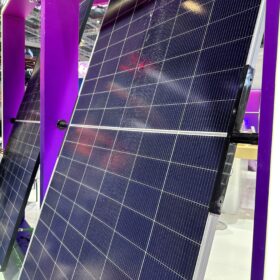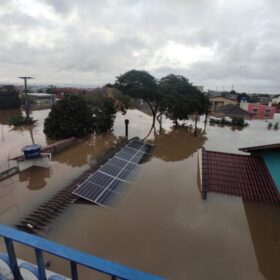Research shows tilt angles over 30 degrees delay solar module thermal failures
A Chinese-Italian research team has analyzed the influence of different tilt angles on the thermal failure of the photovoltaic façades or roofs in fire conditions, finding that when the tilt angle exceeds 30 degrees, the time to failure increased significantly.
New testing method for solar water pumps
An international research group has proposed a low-cost testing methodology for solar water pumping systems that can reportedly improve water access in developing countries. The novel approach enables ongoing borehole monitoring without additional fuel costs or interruptions to the water supply.
Study shows sheep grazing under solar panels produces higher-quality wool
A study on the benefits of co-locating solar energy and sheep grazing shows that sheep grazing in the shade of PV modules may produce higher-quality wool than those on traditional agricultural properties.
California EV maker unveils solar car with 64 km of daily, charge-free range
Aptera Motors, a California-based solar electric vehicle maker, has demonstrated its first production-intent design vehicle. It says it will offer up to 40 miles (64 km) of daily range from its onboard solar cells.
Australian PV equipment supplier says new bundled conduit improves residential rooftop solar install times by 20%
A pre-assembled conduit manufactured in Australian by Victoria-based balance-of-system supplier PV Connections has purportedly reduced installation time of rooftop solar systems by up to 20%.
U.S. government releases bottom-up solar pricing tool
The U.S. Department of Energy’s latest solar cost model shows that residential solar prices are up, commercial solar is getting cheaper and utility-scale pricing remains flat. The addition of batteries increases costs by $1.75/W for residential projects and $0.75/W for larger installations.
Schneider Electric introduces portable solar power station
The OffGrid portable power station provides power for outdoor adventures as well as in hurricane-ravaged areas.
Chinese PV Industry Brief: JA Solar, Longi, Jinko, Trina report Q3 results
The Big FOUR released Q3 reports last week. JinkoSolar sees a steep drop in Q3 profit amid industry challenges. JA Solar experienced a revenue decline but recovered profit. LONGi narrows losses as revenue slips.
German companies launch ‘world’s largest’ plug-in PV system
Indielux and EPP Solar have released the “world’s largest” plug-in PV system, a 6 kW unit with a power storage option that connects to existing electrical setups via a safety plug. It is available in Germany, France, Austria, Poland, and Spain.
Flood precautions for rooftop PV, ground-mounted solar
pv magazine examines recommendations and precautions for flooding, as water exposure to electrical devices such as inverters or battery packs can have serious consequences.










